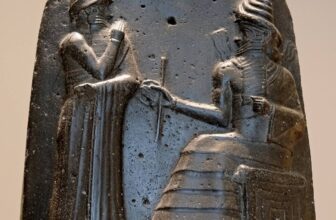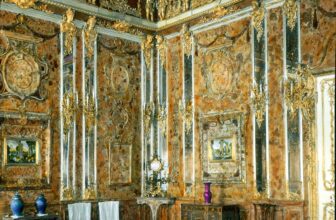Who Is Ginevra de’ Benci?
Ginevra de’ Benci, one of Leonardo da Vinci’s earliest known works, stands as a testament to his genius and a pivotal moment in the history of Renaissance art. This portrait is not just a depiction of a young woman; it is a window into the cultural, intellectual, and artistic innovations of 15th-century Florence. Housed at the National Gallery of Art in Washington, D.C., this painting is the only Leonardo portrait in the Americas and has captivated art lovers and scholars alike with its beauty and enigmatic symbolism.
Art history is brimming with enigmatic figures, but few are as compelling as Ginevra de’ Benci, the subject of one of Leonardo da Vinci’s most celebrated early portraits. This 15th-century Florentine noblewoman is immortalized in a painting that serves as both a masterful work of art and a historical document of Renaissance culture. But who was Ginevra de’ Benci, and why does her image continue to captivate audiences more than 500 years later?
The Historical Ginevra de’ Benci
Ginevra de’ Benci (1457–1487) was a member of a wealthy and influential family in Florence. Her father, Amerigo de’ Benci, was a prominent banker, and their family’s status ensured Ginevra’s place within the upper echelons of Florentine society. Women of her standing were often celebrated for their beauty, virtue, and intelligence, qualities that Leonardo da Vinci skillfully captured in his portrait.
Renowned for her intelligence and beauty. Little is known about her life, but she is often associated with Bernardo Bembo, a Venetian ambassador, who is believed to have commissioned the portrait. The painting’s purpose remains a topic of debate: some argue it was created to commemorate her betrothal, while others suggest it was a platonic tribute to her virtues.
Unlike many women of her time, Ginevra was also known for her intellect and literary connections. She was a poet and a muse, admired by contemporaries for her wit and refinement. It’s believed that her portrait was commissioned to mark her marriage or possibly her engagement, a common practice among Renaissance elites.
Leonardo’s Early Mastery
Leonardo was in his early twenties when he painted Ginevra de’ Benci. Despite his youth, the work showcases his exceptional skill in capturing human emotion and physical detail. The portrait demonstrates his revolutionary use of sfumato, a technique he would later perfect, which creates a soft transition between colors and tones, lending the image a lifelike quality. Ginevra’s face is framed by a misty halo, emphasizing her delicate features and serene expression.
Artistic Composition
The portrait is unconventional for its time. Unlike many Renaissance portraits, which often depicted the subject in profile, Leonardo chose a three-quarter view, a format that allowed him to explore the complexity of Ginevra’s personality. Her gaze is direct yet reserved, conveying both strength and introspection.
Ginevra is positioned against a juniper bush, a symbol of chastity in Renaissance iconography. In Italian, juniper (“ginepro”) also serves as a pun on her name. The inclusion of this botanical element adds a layer of personal significance to the work, blending portraiture with symbolic meaning.
The Reverse Side: A Rare Dual-Sided Portrait
One of the most intriguing aspects of Ginevra de’ Benci is its reverse side. The back of the painting features an emblematic design: a wreath of laurel and palm encircling a juniper sprig, with a scroll bearing the Latin motto “Virtutem Forma Decorat” (“Beauty Adorns Virtue”). This dual-sided composition is unusual for portraiture and reflects the Renaissance’s fascination with intellectual and moral ideals.
Leonardo da Vinci’s painting of Ginevra de’ Benci is remarkable not only for its technical brilliance but also for its departure from traditional portraiture. Completed around 1474–1478, when Leonardo was still in his twenties, the work is considered one of his earliest masterpieces. Today, it resides in the National Gallery of Art in Washington, D.C., the only Leonardo painting in the Americas.
The portrait is a small but powerful piece, measuring just 38.8 x 36.7 cm. Ginevra is depicted in three-quarter view against a background of juniper trees, which serve as a visual pun on her name (“Ginevra” is derived from “ginepro,” the Italian word for juniper). Her expression is reserved and introspective, exuding a sense of quiet dignity.
Leonardo’s use of sfumato, a technique that creates soft, blurred transitions between colors and tones, is evident in the delicate rendering of Ginevra’s features. The portrait’s realism and psychological depth were groundbreaking for its time, influencing countless artists who followed.
Symbolism and Meaning
Leonardo’s work is rich in symbolism. The juniper bush not only alludes to Ginevra’s name but also underscores her chastity and moral integrity. The wreath of laurel and palm represents triumph and virtue, suggesting that her beauty is a reflection of her inner character. Together, these elements create a multidimensional portrayal that transcends mere physical likeness.
A Study in Human Emotion
Ginevra’s expression is one of the most debated aspects of the painting. Her slightly parted lips and enigmatic gaze hint at an inner world that Leonardo sought to capture. This psychological depth was revolutionary in portraiture, marking a departure from the more static and idealized depictions of the time. Ginevra de’ Benci is not just a beautiful woman; she is an individual with thoughts, emotions, and a story to tell.
Technical Achievements
Leonardo’s meticulous attention to detail is evident in every aspect of the painting. From the texture of Ginevra’s hair to the intricate foliage of the juniper bush, his observational skills are unparalleled. The use of light and shadow creates a three-dimensional effect, making Ginevra appear almost tangible. This mastery of technique laid the groundwork for many of Leonardo’s later works, including the iconic Mona Lisa.
Historical Context
The Renaissance was a period of profound cultural transformation, and Ginevra de’ Benci embodies the era’s ideals. The painting reflects the Renaissance’s emphasis on individualism, intellectualism, and the synthesis of art and science. Leonardo’s ability to blend naturalism with symbolic meaning epitomizes the innovative spirit of the time.
The Enduring Legacy of Ginevra de’ Benci
Ginevra’s portrait has fascinated art historians, scholars, and viewers for centuries. Its significance lies not only in its artistic merits but also in its ability to provide a window into Renaissance society, where art, poetry, and humanism flourished. Ginevra herself remains an enigmatic figure, her life only partially illuminated by historical records and the masterful strokes of Leonardo’s brush.
Today, the portrait of Ginevra de’ Benci continues to attract millions of visitors and serves as a testament to the enduring power of art to capture the complexity of the human spirit. Through Leonardo’s genius, Ginevra is not merely a historical figure but a timeless icon of beauty, virtue, and intellectual curiosity.
The Journey to the National Gallery
Ginevra de’ Benci’s journey from Florence to Washington, D.C., is a story in itself. The painting was acquired by the National Gallery of Art in 1967 from the Liechtenstein family, who had owned it for centuries. Its arrival in the United States marked a significant moment in the art world, offering American audiences the rare opportunity to experience a Leonardo masterpiece firsthand.
Modern-Day Significance
Today, Ginevra de’ Benci continues to captivate audiences and inspire artists. Its intricate symbolism, technical brilliance, and psychological depth make it a cornerstone of art history. The painting also serves as a reminder of Leonardo’s enduring influence and the timeless power of art to connect us with the past.
Ginevra de’ Benci is a masterpiece that bridges the gap between art and humanity. Leonardo da Vinci’s innovative techniques and profound understanding of the human spirit make this work a landmark in the history of art. As we stand before Ginevra’s gaze, we are reminded of the Renaissance’s enduring legacy and the universal quest to capture the essence of life through art.




